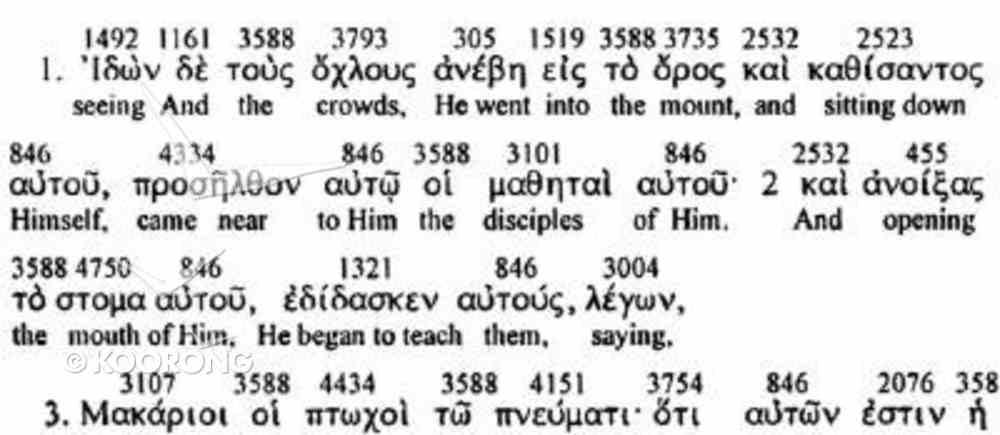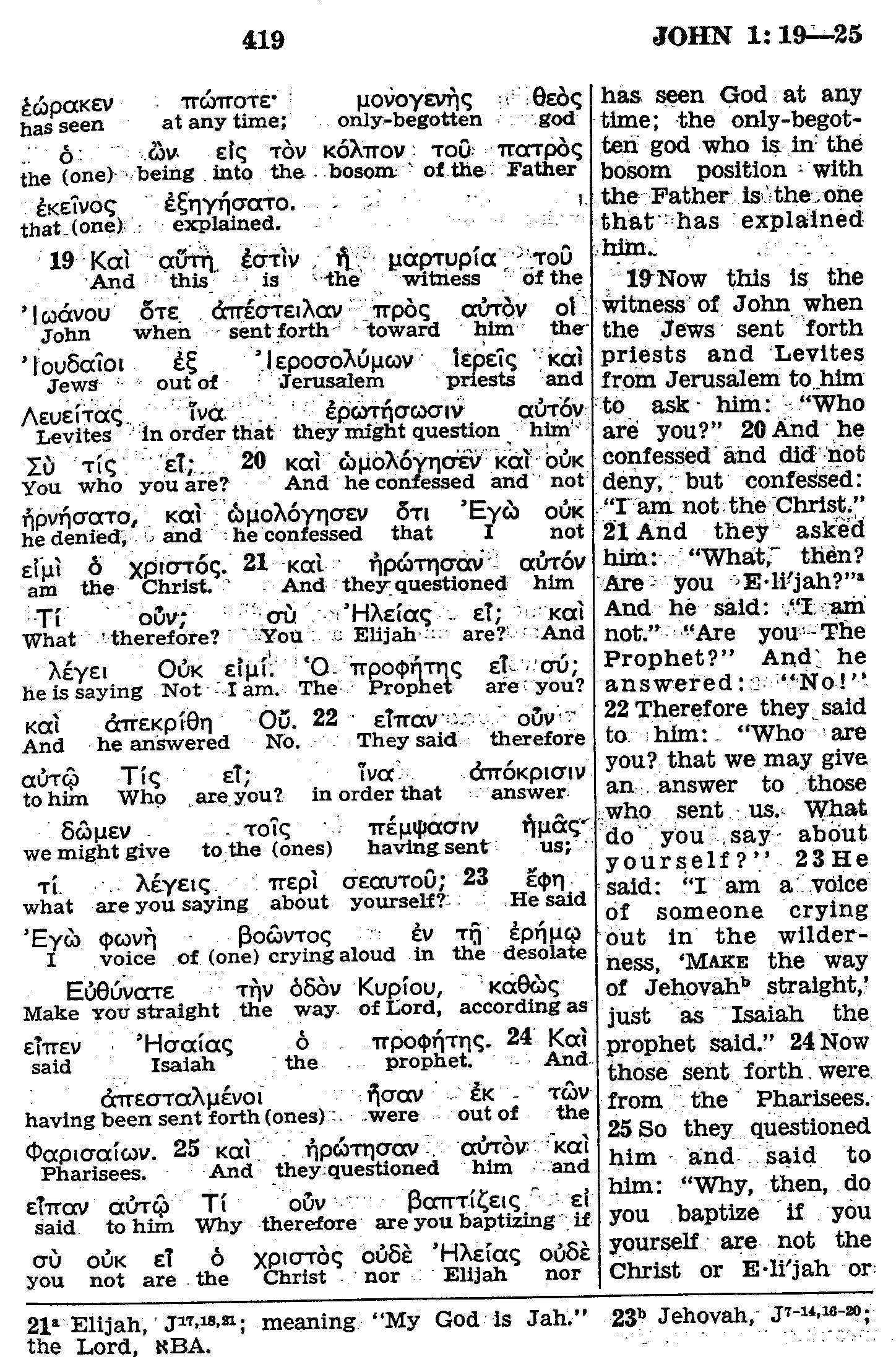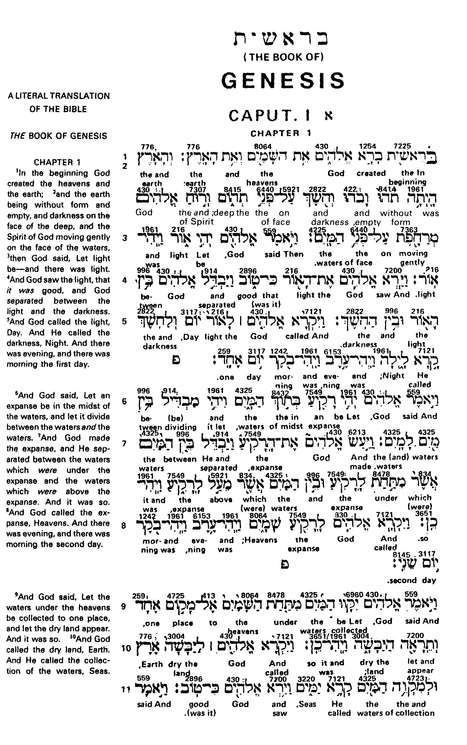
Strong's numbers are printed directly above the Hebrew and Greek words, which enables those with no prior knowledge of Greek or Hebrew to easily access a wealth of language reference works keyed to Strong's Greek/Hebrew dictionaries, analytical lexicons, concordances, word studies and more.
Volume 4 (Greek-English): New Testamentįeaturing the complete Hebrew and Greek texts with a direct English rendering below each word, the layout also includes a literal translation of the Bible in the outside column. Volume 3 (Hebrew-English): Psalm 56-Malachi.  Volume 2 (Hebrew-English): 1 Samuel-Psalm 55. Volume 1 (Hebrew-English): Genesis-Ruth. The volumes in the 4-volume set are broken up as follows: The worst of all is that the verse numbering is added after it in the margins: so you need to fix the verse numbering if you want to make an e-text of it and need permission from Trinitarian Bible Society (and Tyndale House that now supports the Tyndale House Greek New Testament: that is far of a TR source).Keyed to Strong's Exhaustive Concordance, the Interlinear Hebrew-English Bible offers pastors, students, and laypeople a time-saving tool for researching the subtle nuances and layers of meaning within the original biblical languages.Īvailable in two formats-as a complete edition in one volume (ISBN 9781565639775) or as a 4-volume complete set (ISBN 9781565639805). The TR put out by Trinitarian Bible Society is copyrighted while it is a cheap reprint of the Scrivener Textus Receptus 1894 that is Public Domain. In the Restored Textus Receptus is there an apparatus with a list of differences between Stefanus Textus Receptus 1550 and Scrivener Textus Receptus 1894 and I made a translation of the differences. (Ignoring the movable Nu grammar rule in the e-Sword version).īut the KJV is closer to the Scrivener Textus Receptus 1894. The TRa and TRi are based on reprints of the Stefanus Textus Receptus 1550. (So I should use HOT+ and the Hebrew Study Bible editions).
Volume 2 (Hebrew-English): 1 Samuel-Psalm 55. Volume 1 (Hebrew-English): Genesis-Ruth. The volumes in the 4-volume set are broken up as follows: The worst of all is that the verse numbering is added after it in the margins: so you need to fix the verse numbering if you want to make an e-text of it and need permission from Trinitarian Bible Society (and Tyndale House that now supports the Tyndale House Greek New Testament: that is far of a TR source).Keyed to Strong's Exhaustive Concordance, the Interlinear Hebrew-English Bible offers pastors, students, and laypeople a time-saving tool for researching the subtle nuances and layers of meaning within the original biblical languages.Īvailable in two formats-as a complete edition in one volume (ISBN 9781565639775) or as a 4-volume complete set (ISBN 9781565639805). The TR put out by Trinitarian Bible Society is copyrighted while it is a cheap reprint of the Scrivener Textus Receptus 1894 that is Public Domain. In the Restored Textus Receptus is there an apparatus with a list of differences between Stefanus Textus Receptus 1550 and Scrivener Textus Receptus 1894 and I made a translation of the differences. (Ignoring the movable Nu grammar rule in the e-Sword version).īut the KJV is closer to the Scrivener Textus Receptus 1894. The TRa and TRi are based on reprints of the Stefanus Textus Receptus 1550. (So I should use HOT+ and the Hebrew Study Bible editions). 
The Hebrew Study Bible use pointed text and parashot(paragraphs and semi-paragraphs), and Ketiv and Qere but is based on the Westminster Leningrad Codex.

The Hebrew OT and Hebrew OT+ have trouble with verses in Psalms that have titles. The old HOT and HOT+ were the closed Hebrew text compared with the Bloomberg edition.īut the Bloodberg edition use a pointed text and parashot(paragraphs and semi-paragraphs), and Ketiv and Qere.







 0 kommentar(er)
0 kommentar(er)
